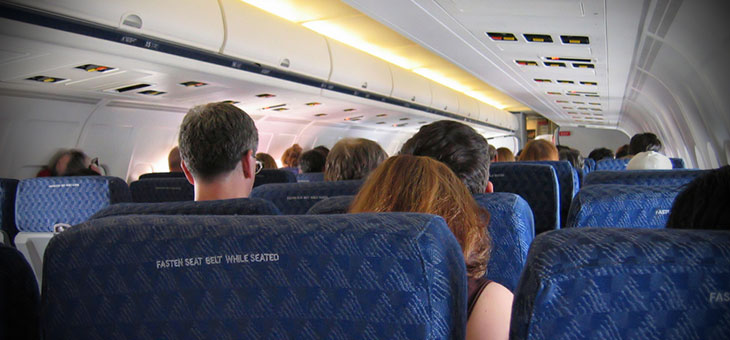If you’ve ever been stuck in the middle seat with your back against the toilet wall, you’ve been in the worst seat on the plane.
But is there a way to ensure you’ll never be plopped in this spot again?
Yes, says SeatGuru’s David Duff.
Mr Duff was recently interviewed by SmarterTravel, during which he shared expert tips for avoiding the in-air equivalent of hell.
When asked where exactly the worst seats on the plane are, Mr Duff said: “in the last row of the aircraft. The seats [there] more than likely have limited recline, [and] the proximity to the lavatory and galley are going to be bothersome since you are dealing with noises, smells, people queueing to use the lavatory, and the flight crew opening and closing storage compartments and chatting.”
And if you think that sounds bad, read on.
“Many times, the windows are missing at these seats as well,” he continues, “and to top it all off, you are going to feel turbulence a bit [more] toward the back of the plane.”
The back rows are usually the last ones to disembark, so you have to go through this hell for longer and, if you’re on a tight schedule, potentially increase your chance of missing a connecting flight.
Mr Duff also says that there are other seats that are not as bad, but still have major drawbacks. These include all middle seats and seats in front of an exit row.
“These seats usually have limited recline in case the plane has to be evacuated,” he explains.
Even some exit row seats for which passengers can often pay a premium have their drawbacks.
“One of the major complaints we read about from [the SeatGuru] community is how the seat nearest to an exit door tends to be colder than surrounding seats,” says Duff.
Bulkhead seats can also be inconvenient, with no storage under the seat in front of you and an increased chance you’ll have parents with babies alongside you.
So, how do you avoid these seats?
Use your airline’s online check-in facility and check in as soon as possible. But don’t rely on the airline to give you detailed information about plane’s layout and seat drawbacks. SeatGuru has a much more detailed aircraft cabin plan that identifies seats with potential problems such as limited recline, proximity to galleys and/or lavatories, misaligned or missing windows, and reduced seat width. YourLifeChoices has also reported on the plane seats to avoid.
The site also highlights desirable seats with extra legroom or storage space, and you can read passenger reviews to help you decide on the perfect seat for your flight.
Airlines may charge extra for desirable seats, and others make you pay a fee for any seat selection at all, so you’ll need to decide how much you’re willing to pay for inflight comfort.
“We understand that travellers want to save money on their flight and be comfortable at the same time, and sometimes that [means] you have to pay a bit extra for that comfort,” says Duff.
“A lot of the flying experience is out of your control, so why not make sure that you are able to control one thing?”
You should also know that airlines can still change your seat allotment at any time for various reasons. And, if you’re late for check-in or get to the gate at the last minute, airlines may assume you’re not coming and give your seat away to someone else.
Do you have a favourite seat on the plane? What are your tips for getting the best seat on a plane?
Related articles:
How to choose the best plane seat
Will plane seats keep shrinking?
The best plane seats in economy

